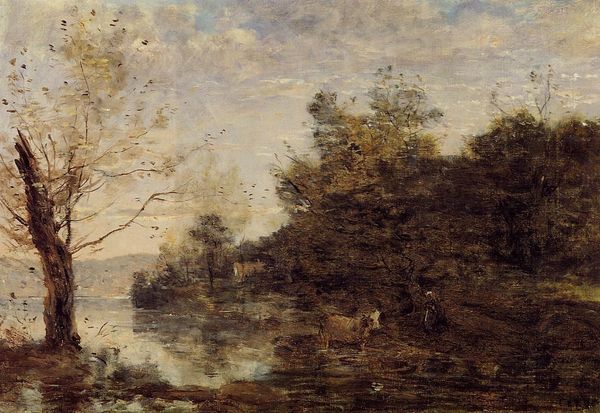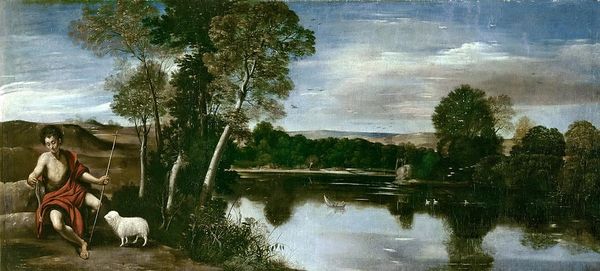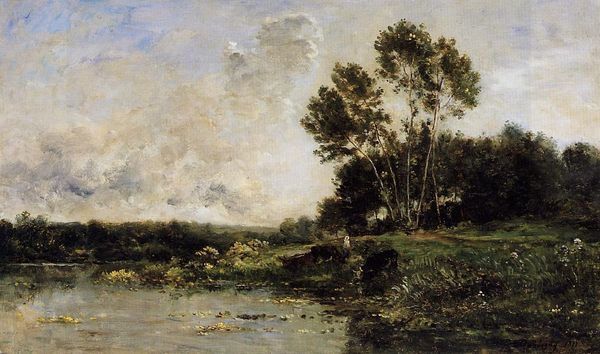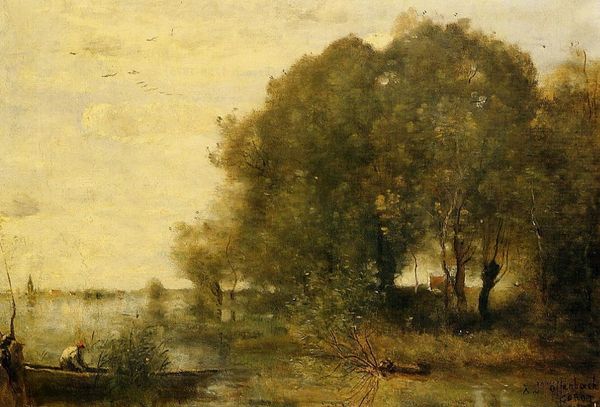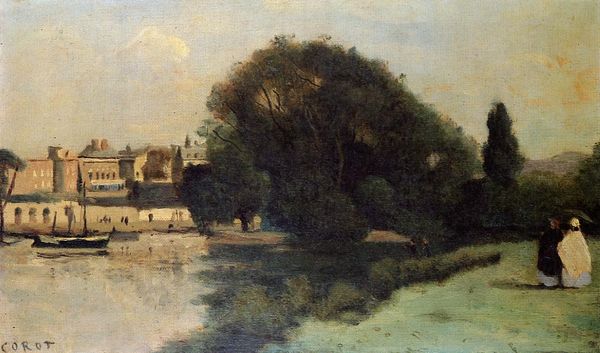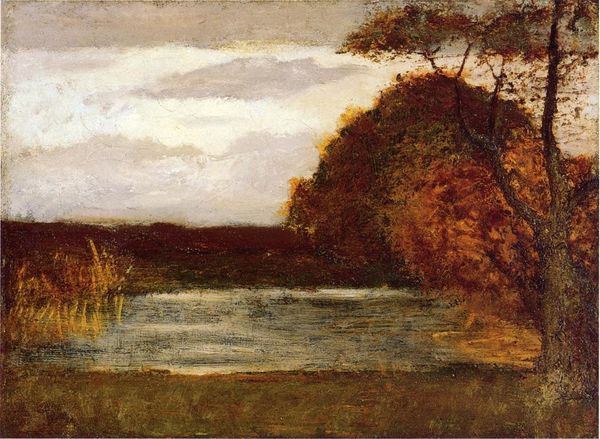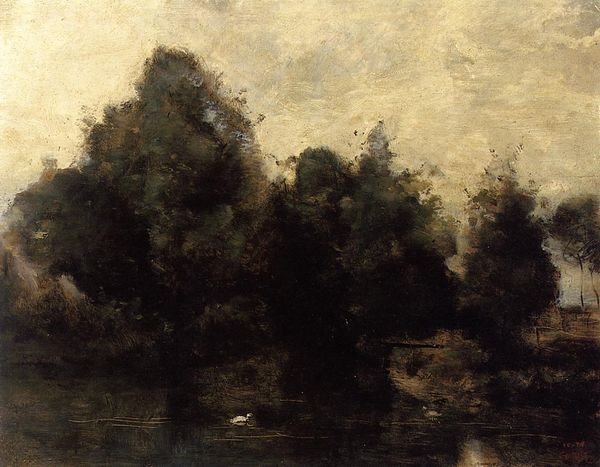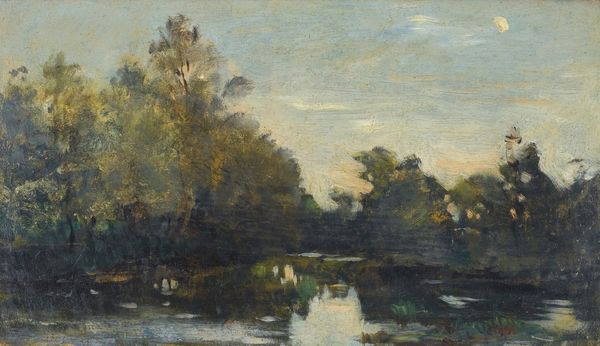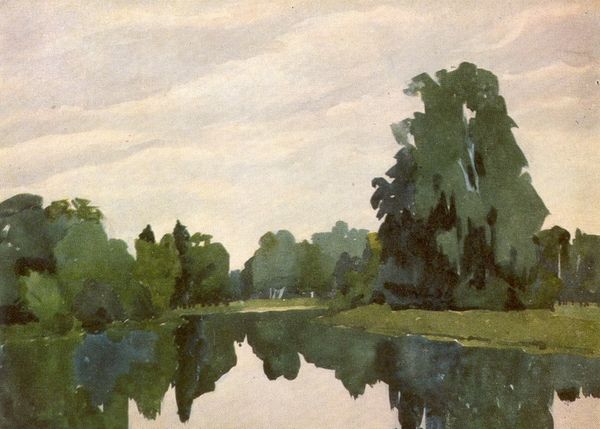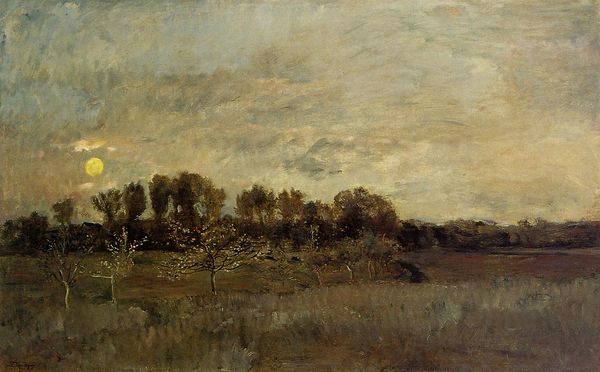
The Rhone Three Women on the Riverbank Seated on a Tree Trunk 1855
0:00
0:00
jeanbaptistecamillecorot
Private Collection
Copyright: Public domain
Curator: This is "The Rhone: Three Women on the Riverbank Seated on a Tree Trunk" by Camille Corot, painted around 1855. It's an oil on canvas, a beautiful example of his plein-air work. Editor: The mood is so tranquil. The muted greens and grays reflecting in the water evoke a sense of peaceful contemplation. The women appear almost as shadows against the luminescent sky, deeply rooted in the landscape. Curator: Precisely. The tree itself, upon which they are resting, acts as a grounding force. Trees, across many cultures, symbolize knowledge, strength, and connection to ancestral roots. I see a deep link to nature’s wisdom here. Editor: I wonder though, are they really at peace? Or does their subdued presence reflect the limited roles women occupied in the 19th century? Are they part of nature or alienated by societal expectations? Perhaps they are both? Curator: That’s a potent point. Consider, too, the visual weight of the landscape versus the small figures of the women. Their almost faceless quality—the deliberate lack of detail—may invite the viewer to project their own emotional landscape onto them, creating a dialogue with timeless feminine archetypes. Editor: Archetypes can be cages, can't they? But Corot paints a complex reality. While they’re small and indistinct, these women command a certain quiet authority. Perhaps he hints at a hidden power within these ordinary lives. What’s their relationship to the river? Rivers are sources of life but also of change, marking the passage of time, of cultural boundaries… Curator: Indeed, rivers are also boundaries. We see echoes of this motif across centuries, like figures bordering Styx or gathering at sacred springs—they often imply transition, threshold moments between realms. The painting quietly hints at transformative moments happening here on a deeply internal level. Editor: I think you are correct. It’s the way Corot invites us to reconsider those imposed boundaries that resonates so powerfully with our contemporary search for gender equality and social justice. Thank you. Curator: The play of light and shadow across the landscape, those subtle clues of historical feminine ideals is why, despite its simplicity, the painting stays in our minds. I'm grateful for that opportunity for discussion and greater comprehension.
Comments
No comments
Be the first to comment and join the conversation on the ultimate creative platform.



